How to care for a polka dot begonia – 5 expert tips for this indoor plant with funky foliage
These bold plants are easy to care for and will instantly add a statement to your interiors
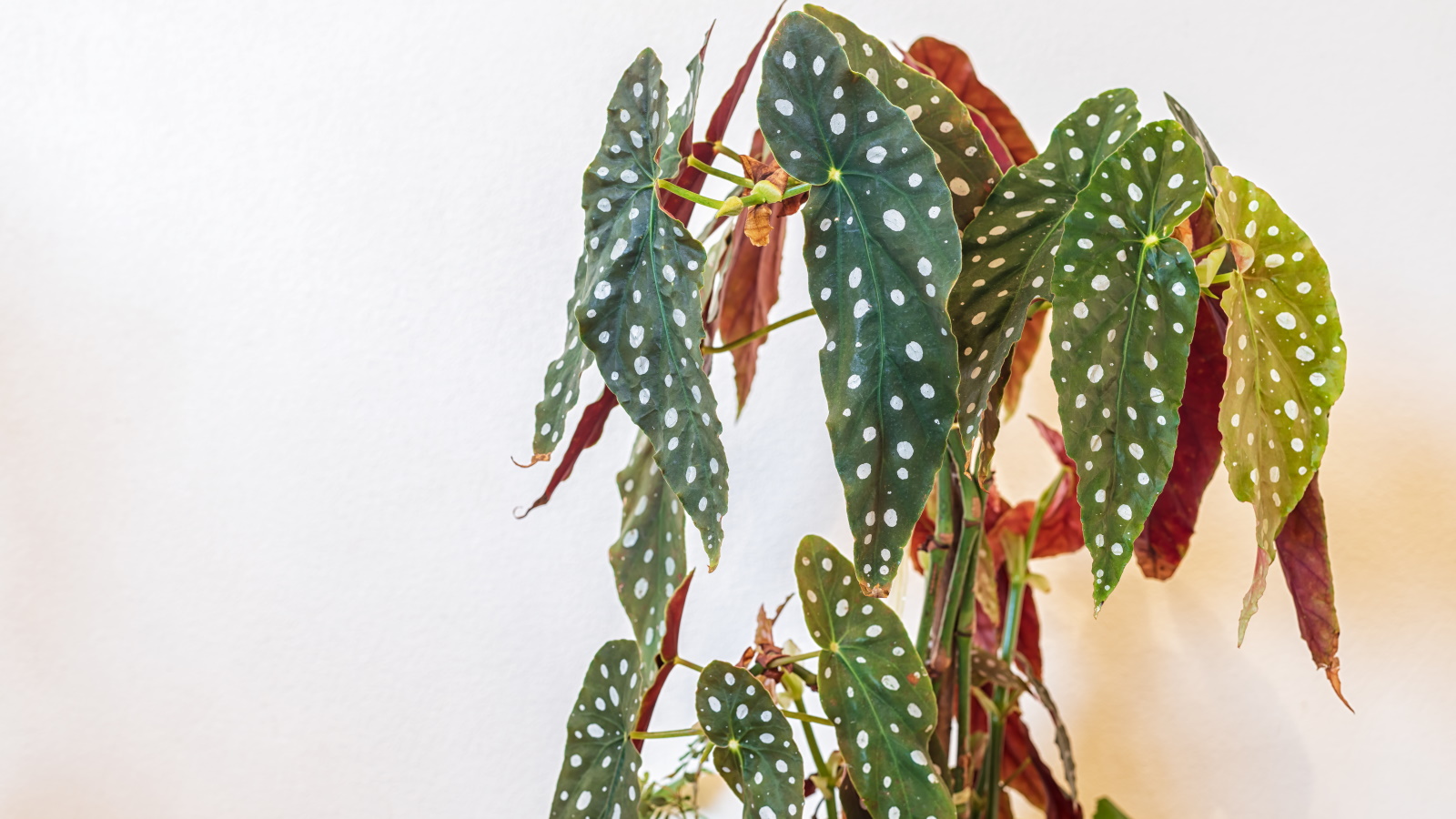

Polka dot begonia, or Begonia maculata, is one of the showiest statement plants to add to your home.
These indoor plants are native to southeast Brazilian rainforests where they enjoy a humid environment. They have become popular tropical indoor plants for their spotted foliage, which sports a vibrant purple underside.
They are easy indoor plants once you are able to replicate their natural environment at home. We've compiled an expert guide to keeping this showy houseplant happy.
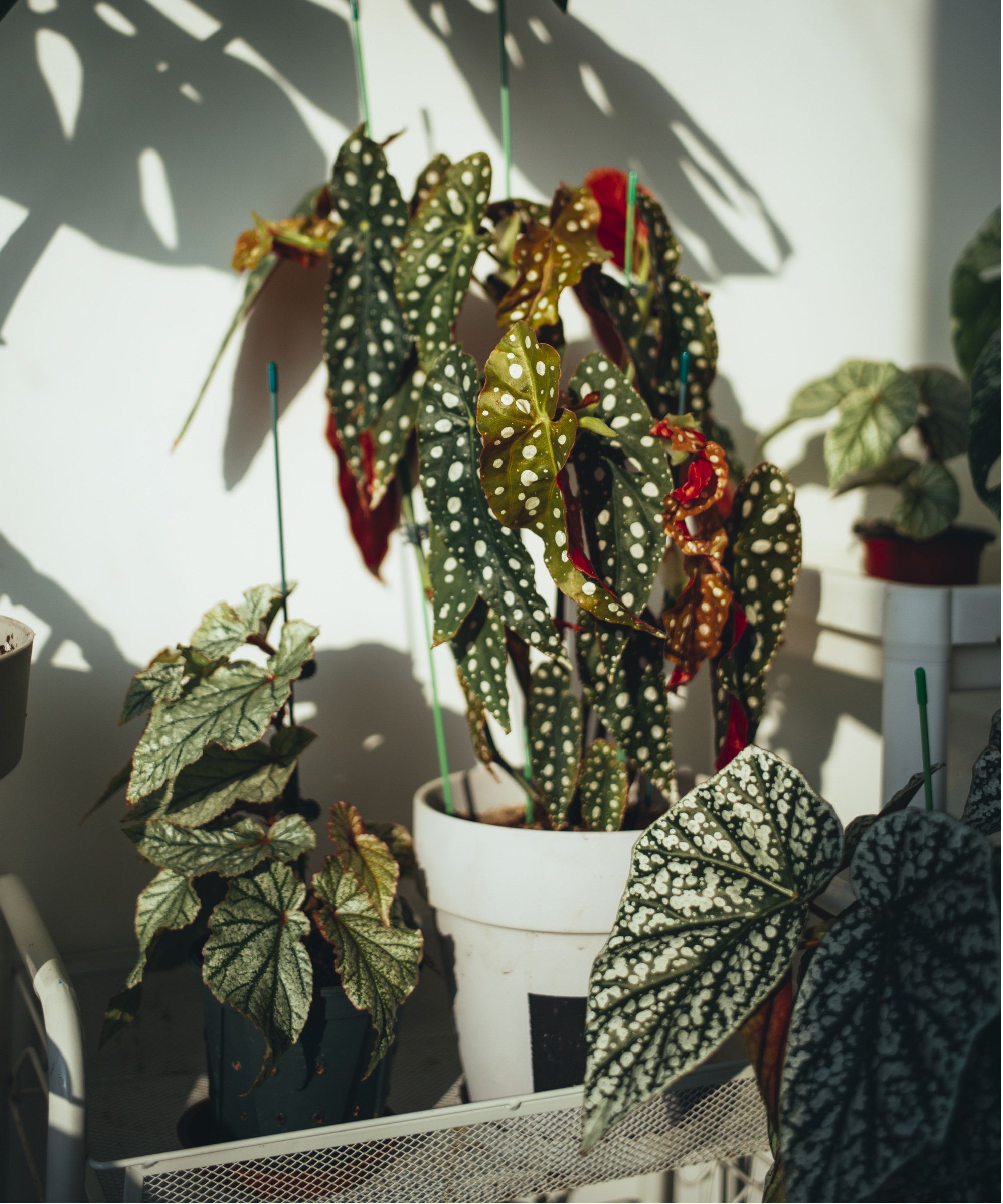
5 expert tips for polka dot begonias
Among the best houseplants with dark foliage, a polka dot begonia is the perfect pick for houseplant lovers wanting to add a bold statement to their interiors. Discover how to best care for this plant and keep it thriving for longer below.
1. Provide plenty of bright, indirect light
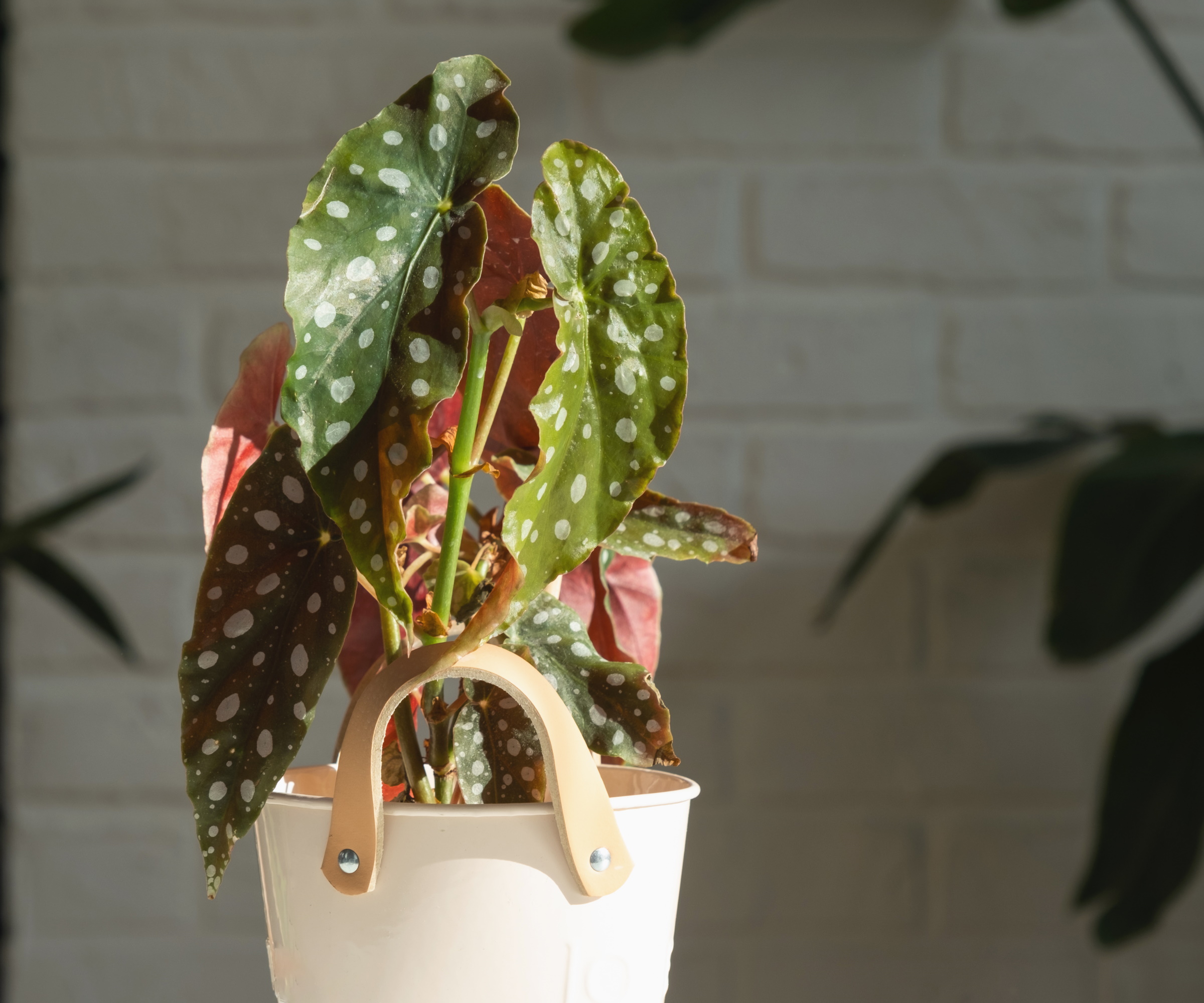
As with other patterned plants and variegated indoor plants, it's important to provide plenty of bright light to retain polka dot begonia's beautiful spots.
'Grow polka dot begonia in a spot with bright light, enough that it casts a medium to strong shadow most of the day,' says Justin Hancock, horticulturist at Costa Farms. 'If it does not get enough light, it will grow tall and spindly, with weak stems and no flowers,' he adds.
Not only do polka dot begonias have foliage that does all the talking, in the right environment they also produce charming white flowers with a sweet fragrance. Provide your begonia with sufficient light and you'll be rewarded with both.

Absolutely passionate about plants (indoors and out), Justin is a consumer horticulturist who’s been getting his hands dirty in the industry for more than 25 years. Before joining the Costa Farms team 2013, he was a garden journalist and broadcaster on local and national networks.
2. Take care not to overwater
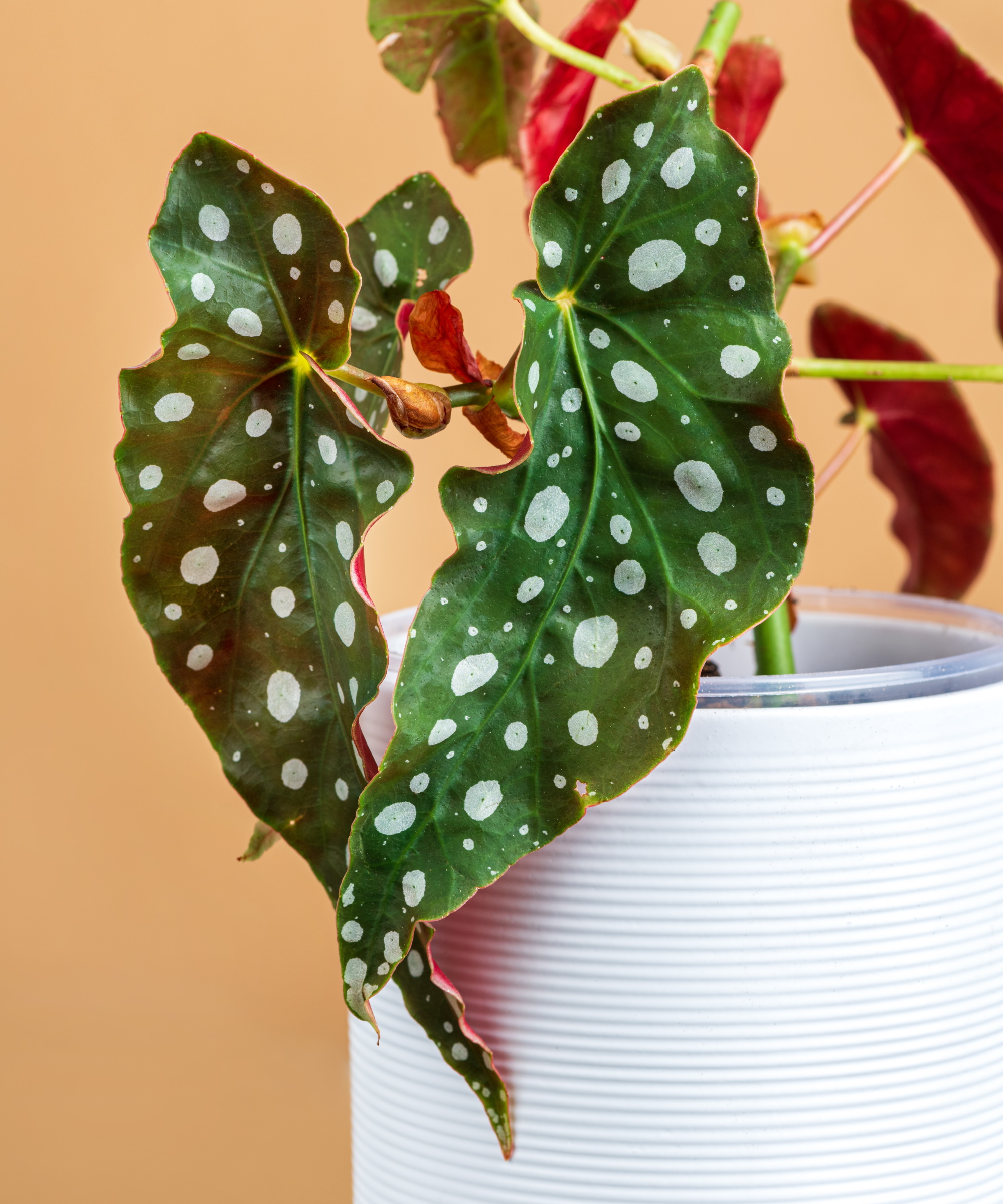
One of the most common indoor plant mistakes is incorrect watering. Not knowing how to water houseplants correctly can lead to plants dying, which is why it's important to know how to water your polka dot begonia correctly.
'Avoid overwatering the plant, as it will succumb to houseplant root rot or crown rot quite easily. At the same time, avoid letting it dry out, as that will stunt the plant’s growth and if the plant is flowering, it will likely drop the flowers when droughted,' says Julie Bawden Davis, indoor plant expert at Healthy Houseplants.
The best way to know if it's time to water your polka dot begonia is by checking the soil with your finger. 'Water when the top inch to inch-and-half has dried out,' says Julie.
You can also use a moisture meter, like this soil moisture meter from Amazon, to monitor water levels.

Julie Bawden-Davis is a garden author and University of California Certified Master Gardener, who has written several gardening books, including Indoor Gardening The Organic Way. In addition to running HealthyHouseplants.com, she shares indoor gardening advice on her YouTube channel @HealthyHouseplants.
3. Avoid cold spots
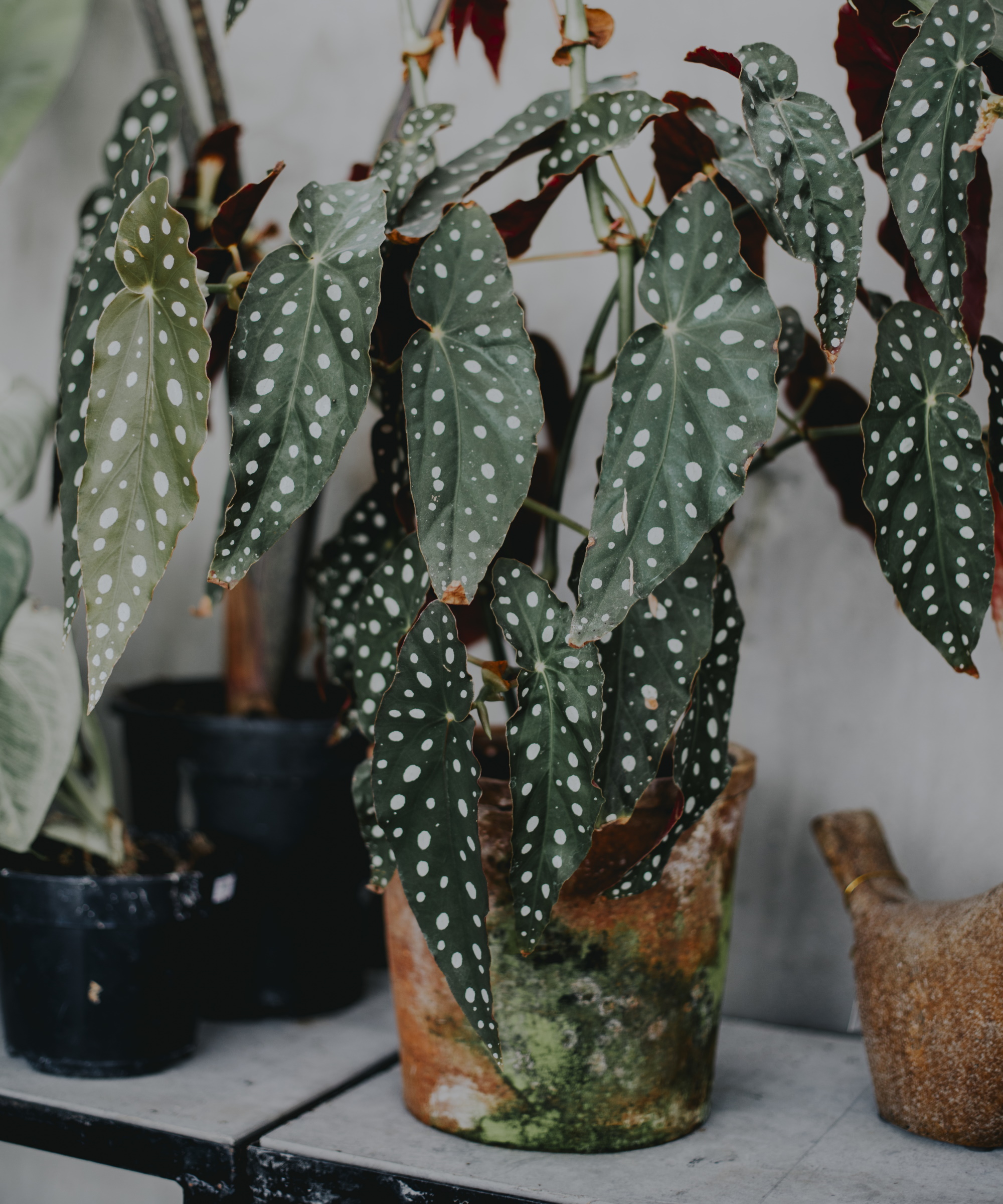
Unlike the best cold-tolerant houseplants, polka dot begonias do not enjoy living in cooler spots. In fact, if they are left in a cold spot or are exposed to draft, you may notice your polka dot begonia leaves drop or curl.
'The ideal temperature range for polka dot begonia is 65-75°F,' says Julie. Although, you should avoid placing them in direct sunlight to keep them warm as this could scorch the foliage.
You could try using a heat mat, like this heat mat from Amazon, to keep your plants warm during colder seasons when room temperatures drop.
4. Keep humidity levels up
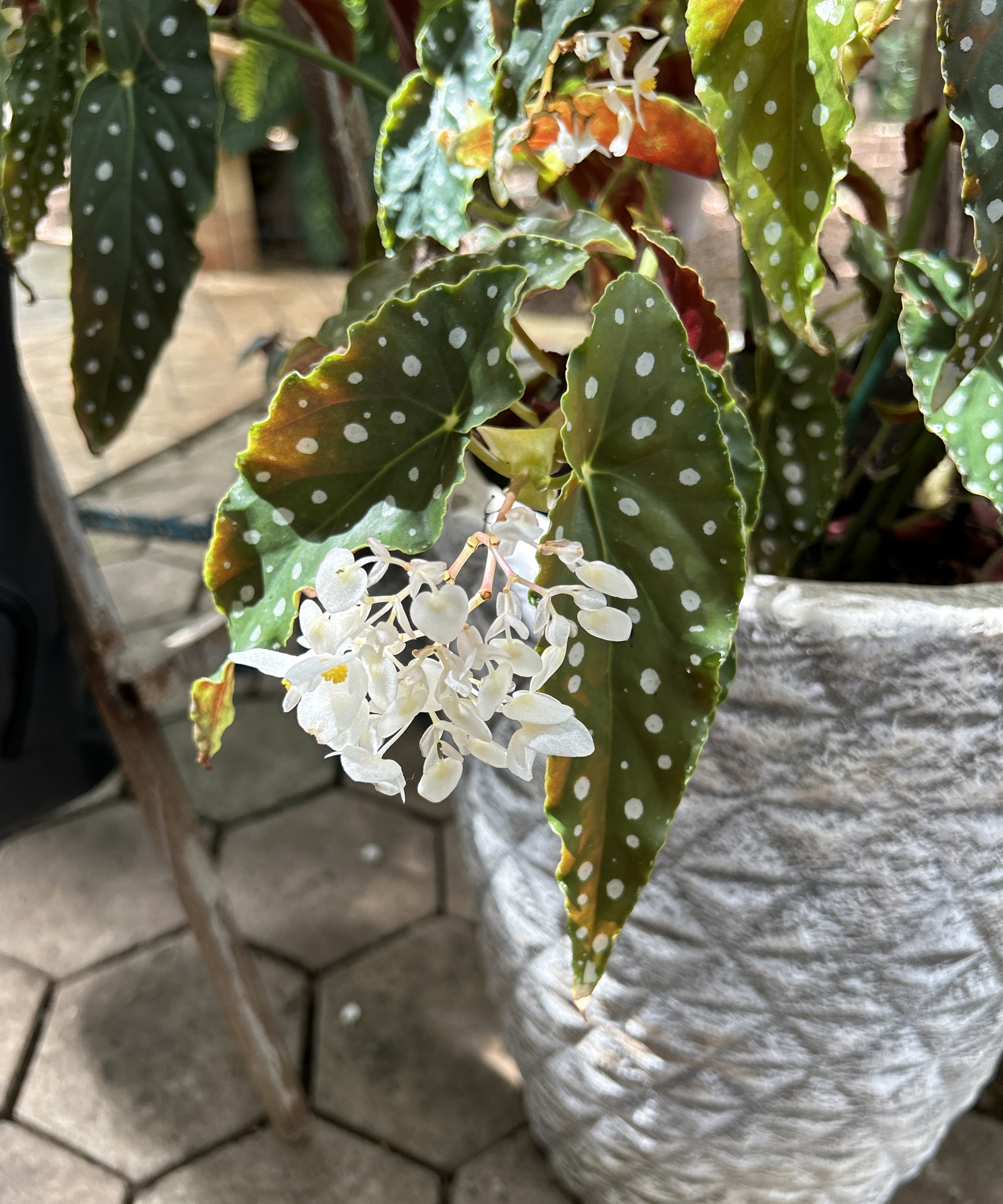
If you're after those polka dot begonia blooms, you need to keep humidity levels up. In their natural environment, polka dot plants enjoy the humidity of rainforests.
'Warm, humid environments are best for polka dot begonias - just think of the rainforest environment,' says Diane Kuthy, the founder of How To Grow Everything. 'You'll want humidity in the range of 60%. A sunny bathroom where hot showers are frequently had is a great spot for a polka dot begonia,' she adds.
There are a few ways you can increase humidity for indoor plants. You may choose to regularly mist your polka dot begonia, using something like this plant mister from Greendigs, or use a humidifier, like this humidifier from Amazon.
Alternatively, you can move your polka dot begonia close to other houseplants, replicating how it grows among the luscious rainforest foliage.

Diane Kuthy is the founder and lead plant expert at How To Grow Everything, a collection of comprehensive grow guides for every plant and vegetable. Diane has over 10 years of gardening experience and she currently manages a 5-acre farm, a four-season greenhouse, over 50 perennial fruit and vegetable varieties, and a large indoor plant conservatory.
5. Prune away leggy stems
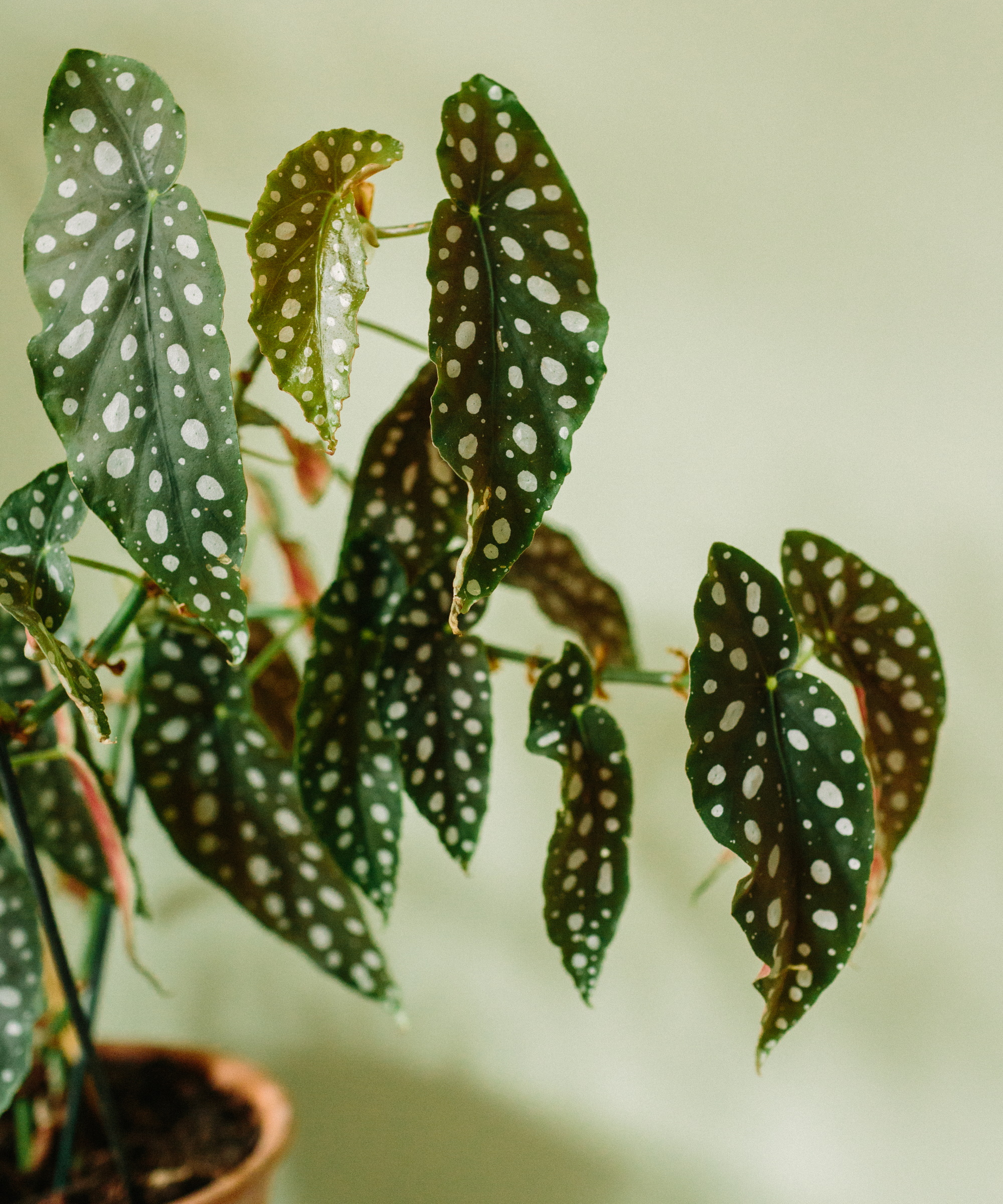
It's not uncommon for polka dot begonias to become leggy, especially if they aren't receiving enough light. But don't worry, it's an easy fix.
'Prune your polka dot begonia on a regular basis to prevent it from becoming leggy. Prune right after a bloom cycle,' says Julie.
Take pruning tools, like these pruning scissors from Bloomscape, and cut away any leggy or dying stems.
'Pinching back the plant will also promote branching,' notes Justin.
FAQs
How do you propagate a polka dot begonia?
It's possible to propagate begonias by taking plant cuttings. Use clean tools to cut off a mature leaf and then make small cuts through veins to encourage root development. You can then place the leaf on potting mix, with the vein side facing down. Keep the cuttings well-watered in a bright position. Within just a few weeks, you should notice root development and new growth.
Why won't my polka dot begonia to flower?
Polka dot begonias produce beautiful, fragrant blooms. If you notice that your plant isn't producing flowers, it could be a sign that it is isn't in optimal growing conditions. Make sure to keep your begonia in a spot with bright, indirect light and keep humidity levels high. It can also be a good idea to repot your begonia if it has become too large, as a smaller pot could be restricting new growth.
Polka dot begonia plants are easy to care for. Ensure to provide optimal conditions in order to retain their beautiful patterns and they'll grow happily in your home for years.
Explore our expert list of the best unusual houseplants to discover more statement indoor plants for your home.
Sign up to the Homes & Gardens newsletter
Design expertise in your inbox – from inspiring decorating ideas and beautiful celebrity homes to practical gardening advice and shopping round-ups.

Tenielle is a Gardens News Writer at Homes & Gardens. She holds a qualification in MA Magazine Journalism and has over six years of journalistic experience. Before coming to Homes & Gardens, Tenielle was in the editorial department at the Royal Horticultural Society and worked on The Garden magazine. As our in-house houseplant expert, Tenielle writes on a range of solutions to houseplant problems, as well as other 'how to' guides, inspiring garden projects, and the latest gardening news. When she isn't writing, Tenielle can be found propagating her ever-growing collection of indoor plants, helping others overcome common houseplant pests and diseases, volunteering at a local gardening club, and attending gardening workshops, like a composting masterclass.
-
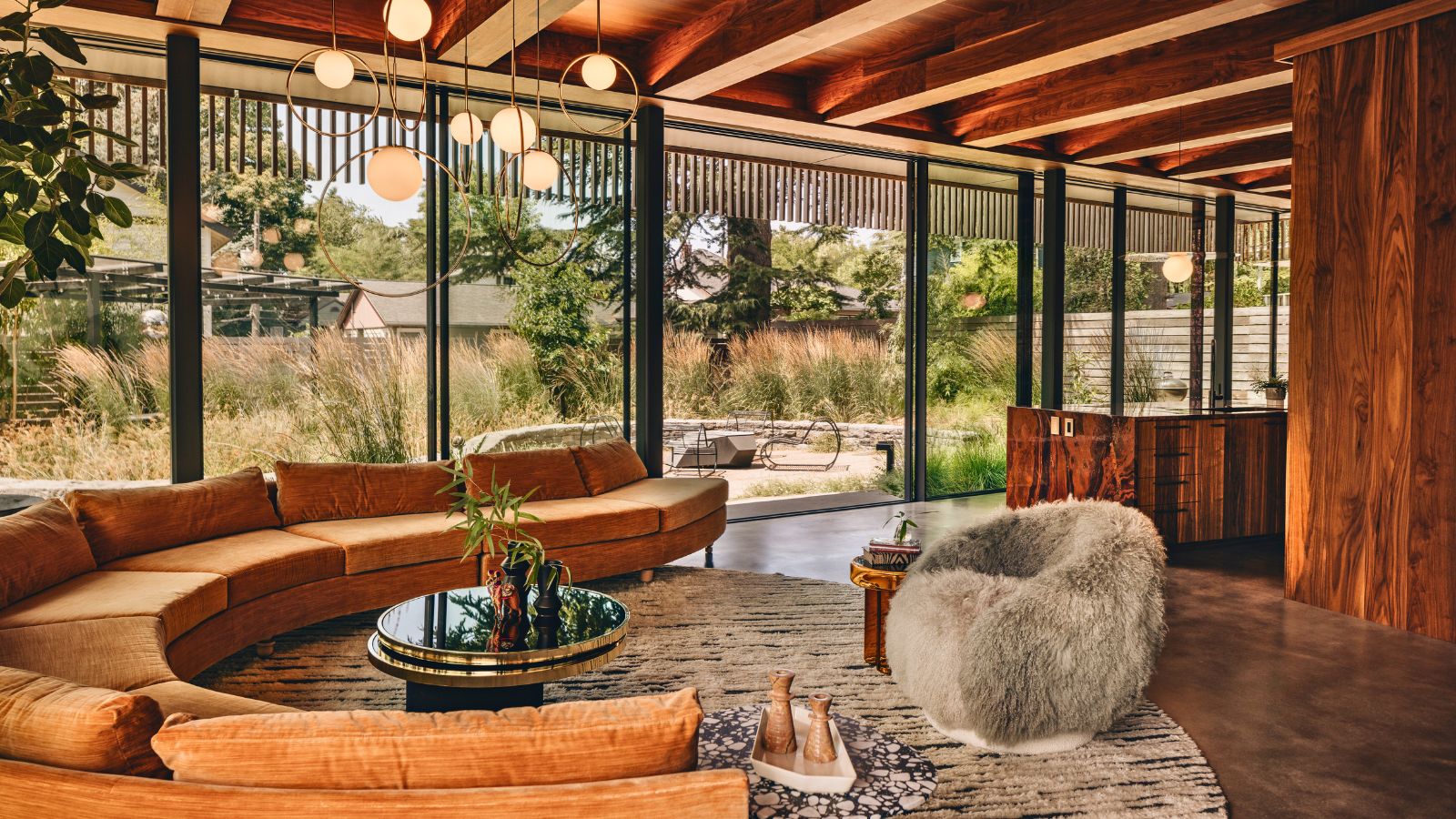 'Sexy disco-era Italy meets Japanese farmhouse in the Brazilian jungle' was the description the interior designer gave this glass-walled modernist home
'Sexy disco-era Italy meets Japanese farmhouse in the Brazilian jungle' was the description the interior designer gave this glass-walled modernist homeOffering a warm welcome that defies its stark, modernist lines, this archictectural gem is full of surprises
By Karen Darlow
-
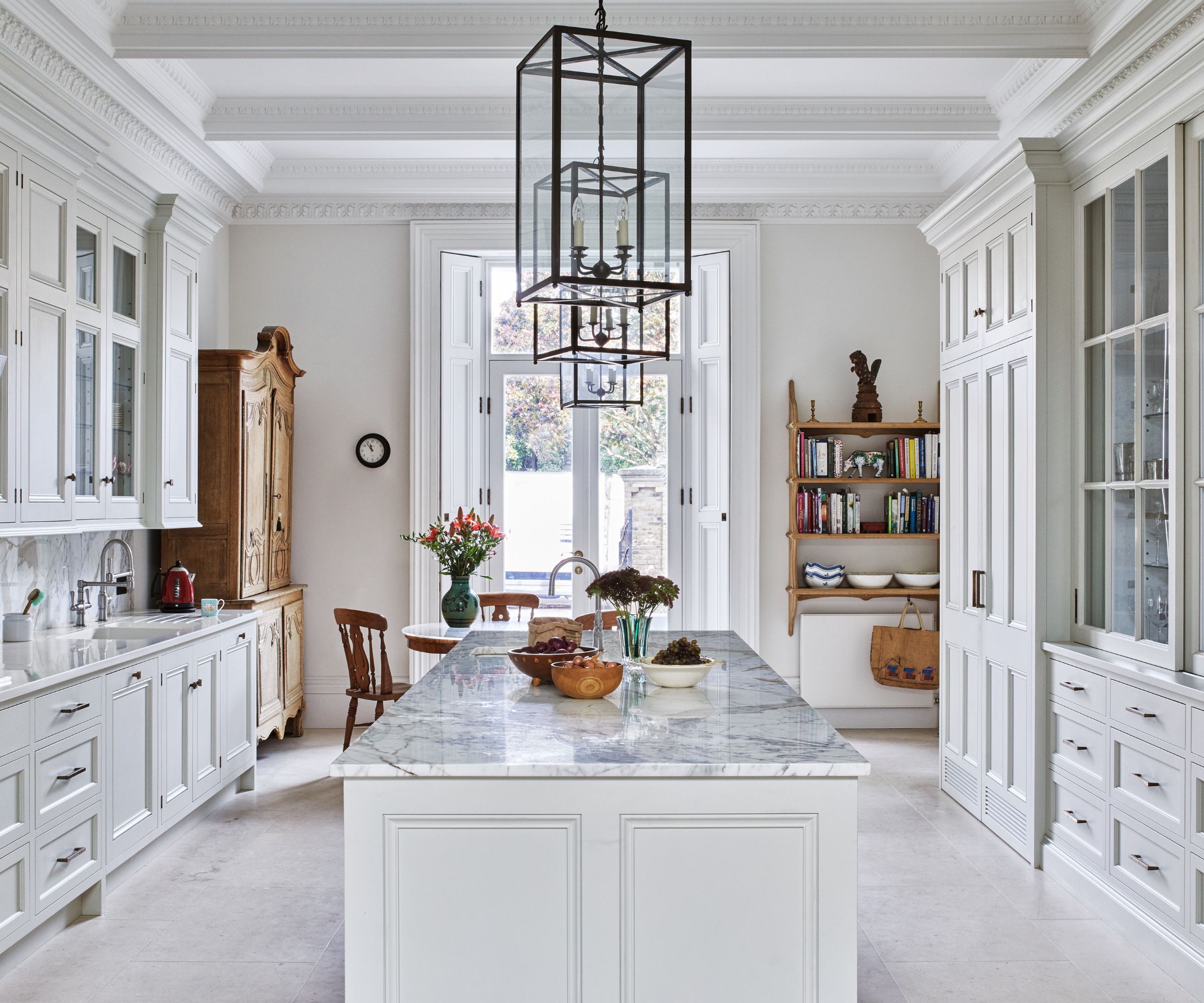 Are you making the most out of the estate sales in your area? These are the 5 most valuable items you should be shopping for
Are you making the most out of the estate sales in your area? These are the 5 most valuable items you should be shopping forVintage lovers and antique experts share the objects you should always look out for when you're exploring an estate sale
By Eleanor Richardson